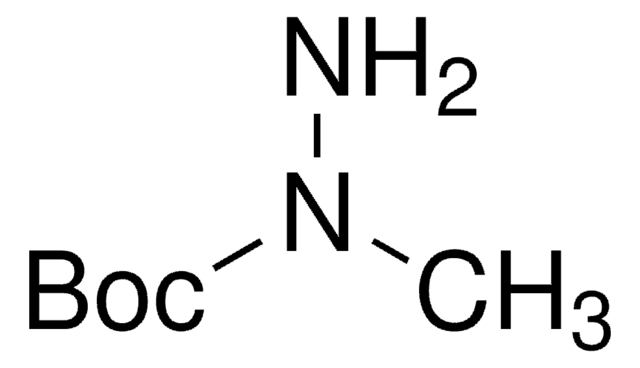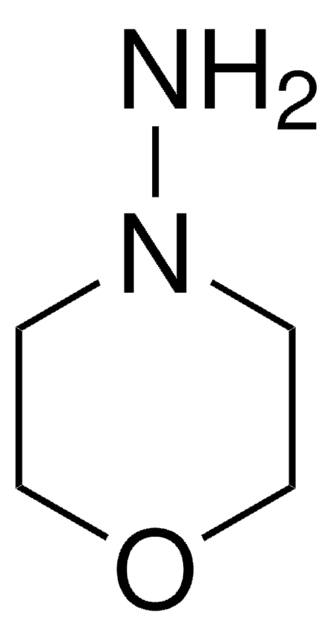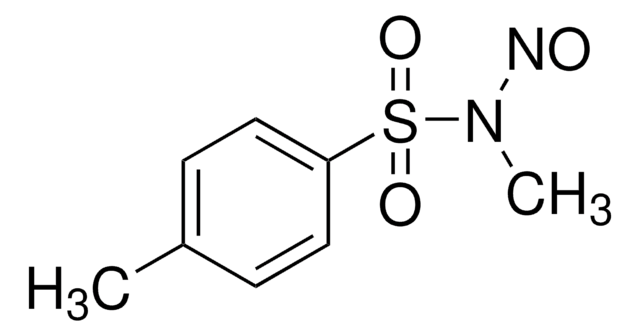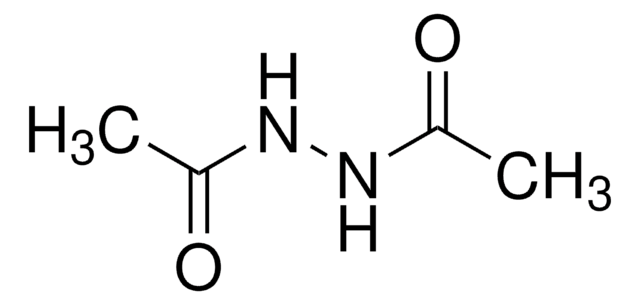D161608
N,N-Dimethylhydrazine
98%
Synonym(s):
1,1-Dimethylhydrazine, asym-Dimethylhydrazine
About This Item
Recommended Products
vapor density
1.94 (vs air)
vapor pressure
103 mmHg ( 20 °C)
Assay
98%
form
liquid
autoignition temp.
478 °F
expl. lim.
95 %
refractive index
n20/D 1.4075 (lit.)
bp
60-62 °C (lit.)
density
0.79 g/mL at 20 °C (lit.)
storage temp.
2-8°C
SMILES string
CN(C)N
InChI
1S/C2H8N2/c1-4(2)3/h3H2,1-2H3
InChI key
RHUYHJGZWVXEHW-UHFFFAOYSA-N
Looking for similar products? Visit Product Comparison Guide
Related Categories
Application
- β-Naphthol via radical amination to form 1-amino-2-naphthol.
- 2-Chloro- and 2,2-dichloro-(bromo)vinyl ketones via regioselective heterocyclization to form 3-substituted 1-methyl(5-halo)pyrazoles.
- Terminal alkynes in the presence of TpRuCl(PPh3)2 (Tp = tris(pyrazolyl)borate) to form nitriles.
N,N-Dimethylhydrazine along with ferric chloride hexahydrate forms an effective reduction system for:
- Synthesizing DNA binding pyrrolo[2,1-c][1,4]benzodiazepine (PBD) imines via reductive cyclization of the corresponding nitro aldehyde.
- Transforming a variety of nitroarenes and azido compounds into the corresponding anilines and amino compounds, respectively.
Biochem/physiol Actions
Signal Word
Danger
Hazard Statements
Precautionary Statements
Hazard Classifications
Acute Tox. 3 Dermal - Acute Tox. 3 Inhalation - Acute Tox. 3 Oral - Aquatic Chronic 2 - Carc. 1B - Eye Dam. 1 - Flam. Liq. 2 - Skin Corr. 1B - STOT SE 3
Target Organs
Respiratory system
Storage Class Code
3 - Flammable liquids
WGK
WGK 3
Flash Point(F)
14.0 °F - closed cup
Flash Point(C)
-10 °C - closed cup
Personal Protective Equipment
Certificates of Analysis (COA)
Search for Certificates of Analysis (COA) by entering the products Lot/Batch Number. Lot and Batch Numbers can be found on a product’s label following the words ‘Lot’ or ‘Batch’.
Already Own This Product?
Find documentation for the products that you have recently purchased in the Document Library.
Customers Also Viewed
Articles
Cancer research has revealed that the classical model of carcinogenesis, a three step process consisting of initiation, promotion, and progression, is not complete.
Our team of scientists has experience in all areas of research including Life Science, Material Science, Chemical Synthesis, Chromatography, Analytical and many others.
Contact Technical Service














